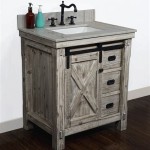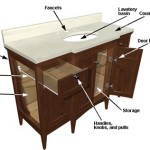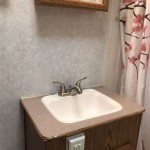How to Layout Bathroom Tile: Essential Aspects
When remodeling a bathroom, meticulous planning and attention to detail are crucial. Among the key aspects to consider is the layout of bathroom tiles. From creating a focal point to ensuring a cohesive aesthetic, bathroom tile layout plays a significant role in the overall design.
To achieve a functional and visually appealing bathroom, several essential aspects must be taken into account during the tile layout process.
1. Determine the Focal Point
Identify the central feature of the bathroom, whether it's a bathtub, shower, or vanity. This will help you determine the starting point and orientation of the tile layout, ensuring the focal point becomes the visual centerpiece.
2. Choose the Tile Pattern
Select a tile pattern that complements the style and size of the bathroom. Classic patterns like subway tiles or basketweave are versatile options, while more intricate patterns can add visual interest. Consider the size of the bathroom and the tiles to ensure a proportional and balanced look.
3. Establish the Layout Grid
Establish a grid system using chalk lines, laser levels, or tile spacers to guide the tile installation. This grid will ensure precise alignment and prevent any misalignment during installation.
4. Set the Center Line
Determine the center line of the bathroom, which is usually the center of the space or the center of the focal point. This will serve as a reference point for starting the tile layout and ensuring symmetry.
5. Establish the Start Point
Identify the starting point for the tile layout, which is typically the center line or the focal point. Begin installing tiles from this point outwards to maintain alignment and minimize cutting.
6. Consider the Grout Lines
The width of the grout lines will impact the overall look of the tile layout. Narrow grout lines create a more seamless and modern aesthetic, while wider grout lines can add visual interest and emphasize the tile shapes.
7. Plan for Cutting and Transitions
In most cases, tiles will need to be cut to fit around fixtures, corners, or edges. Plan for these cuts in advance and use appropriate tools to ensure clean and precise cuts. Transition strips can be used to connect different tile areas or cover sharp edges.

Pick Your Pattern A Visual Guide To Tile Layouts Trendy Bathroom Tiles Layout White Shower

Bathroom Floor Tile Layout In 5 Easy Steps Diytileguy

Laying Floor Tiles In A Small Bathroom Houseful Of Handmade

Bathroom Floor Tile Layout In 5 Easy Steps Diytileguy

10 Tips On Getting Bathroom Tile Layout Right

The Tile Journal Of Hamilton In Woodstock Ga

Avoid The Madness Laying Out Tile Life Of An Architect

How To Lay Out Tile At Home With Ashley

Tile Patterns And Layout Designs The

Why A Centered Tile Layout Is Bad Idea Diytileguy
Related Posts







